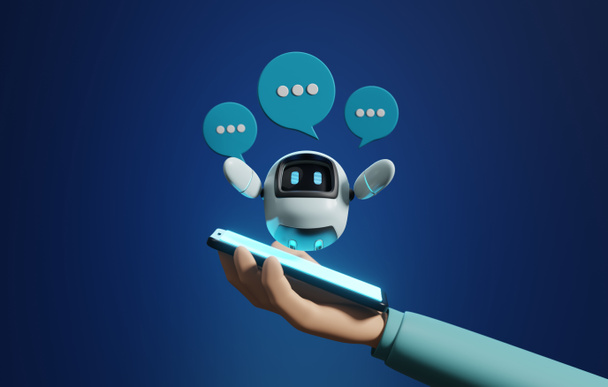What Is Chatbot Marketing?








What Is Chatbot Marketing?
Chatbot marketing is the use of automated chatbots to engage, assist, and convert customers across digital platforms like websites, messaging apps, and social media. These chatbots are programmed to communicate with users, answer questions, recommend products, and guide customers through various stages of the purchasing journey. By automating interactions, chatbot marketing enhances customer experience, provides instant support, and helps businesses drive conversions and sales.
Here’s a deeper look into chatbot marketing and its benefits:
1. What Are Chatbots in Marketing?
Chatbots in marketing are AI-powered virtual assistants programmed to engage with customers and provide real-time responses. They can handle a wide range of queries, from answering basic FAQs to guiding customers through more personalized experiences. With advancements in natural language processing (NLP) and machine learning, chatbots can now understand user intent, making interactions feel more human-like.
2. Benefits of Chatbot Marketing
- 24/7 Customer Support: Chatbots provide immediate responses to customer inquiries at any time, ensuring a seamless experience even outside of regular business hours.
- Increased Engagement: Chatbots can proactively initiate conversations based on user behavior, such as offering help when someone lingers on a product page or providing product suggestions based on browsing history.
- Personalized Interactions: Many chatbots can analyze data to offer personalized product recommendations, discounts, or content, creating a more tailored customer experience.
- Efficient Lead Generation: Chatbots can ask users qualifying questions, collect contact information, and send leads to the sales team for follow-up, effectively acting as a pre-qualification tool.
- Cost Savings: By automating repetitive queries, chatbots can reduce the need for human customer support, cutting costs for businesses while freeing up human agents for more complex interactions.
3. Popular Use Cases in Chatbot Marketing
- Product Recommendations: Chatbots can suggest relevant products based on customer preferences, increasing upselling and cross-selling opportunities.
- Guided Shopping: On e-commerce websites, chatbots can guide users to specific products, answer product questions, and assist with the checkout process.
- Appointment Scheduling: For service-based businesses, chatbots can help customers book appointments or consultations directly through chat.
- Abandoned Cart Recovery: Chatbots can reach out to customers who have abandoned their carts and offer reminders, special discounts, or assistance to complete the purchase.
- Survey and Feedback Collection: Businesses can use chatbots to gather customer feedback through quick surveys and improve their products or services accordingly.
4. Platforms for Chatbot Marketing
- Messaging Apps: WhatsApp, Facebook Messenger, and Instagram are popular platforms where brands deploy chatbots for marketing and customer support.
- Website Chatbots: Many businesses add chatbots directly to their websites to greet visitors, answer questions, and assist with purchases.
- SMS and Email: Some brands use chatbots through SMS and email marketing to engage users with conversational messages.
5. Trends in Chatbot Marketing
- AI-Powered Personalization: AI chatbots are evolving to better understand customer preferences and personalize recommendations.
- Voice-Activated Chatbots: With the rise of voice search, some brands are developing voice-activated chatbots for more convenient, hands-free interactions.
- Integrating Chatbots with CRMs: Businesses are increasingly integrating chatbots with customer relationship management (CRM) systems to create seamless, data-driven customer experiences.
- Omnichannel Chatbots: Chatbots that can interact with customers across various platforms and retain information across channels are becoming more popular.
6. Examples of Successful Chatbot Marketing
- E-commerce: Sephora’s chatbot helps customers find products, book makeovers, and receive personalized beauty advice.
- Travel: KLM Royal Dutch Airlines’ chatbot provides flight information, booking assistance, and travel reminders.
- Food Delivery: Domino’s “Dom” chatbot enables users to place orders via Facebook Messenger and track their delivery.
7. Getting Started with Chatbot Marketing
- Define Your Objectives: Identify what you want to achieve with your chatbot (e.g., customer support, lead generation, or driving sales).
- Choose the Right Platform: Decide where your chatbot will be most effective based on where your customers are (website, social media, messaging apps).
- Develop a Conversational Flow: Design a clear and intuitive conversation flow that covers various customer needs and directs users toward desired actions.
- Test and Optimize: Test your chatbot regularly, gather feedback, and refine its responses to improve the user experience continuously.
8. Conclusion
Chatbot marketing is an effective way to engage with customers in real time, provide personalized experiences, and streamline customer interactions across multiple channels. As technology advances, chatbot marketing will only become more powerful, making it a valuable tool for businesses looking to enhance customer experience, boost engagement, and drive revenue.
- #Chatbot
- #ChatbotMarketing
- #ConversationalAI
- #AIChatbot
- #CustomerEngagement
- #DigitalMarketing
- #CustomerExperience
- #ChatbotAutomation
- #ConversationalMarketing
- #MarketingAutomation
- #AIInMarketing
- #LeadGeneration
- #CustomerSupport
- #ChatbotTrends
- #ChatbotDevelopment

